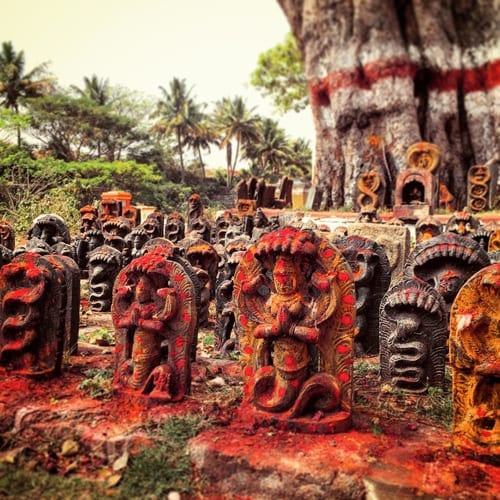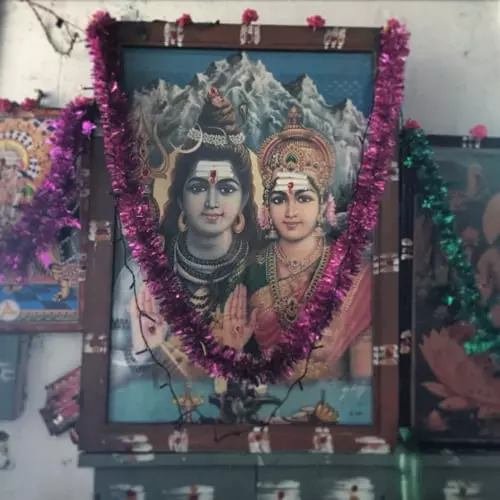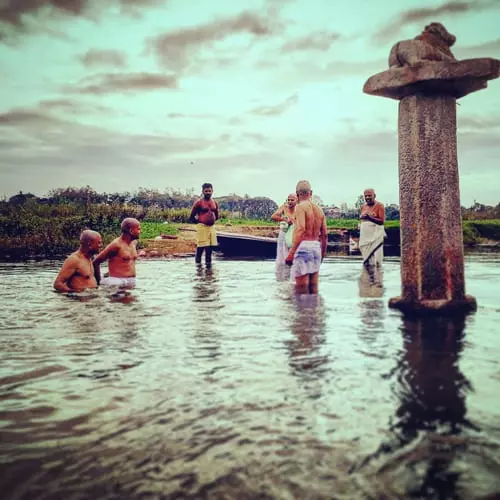Class Etiquette



Shower before practice.
After practice, you can rinse off in the shala shower, if you’d like.
Drink water. Lots of water. After practice and throughout the day.
Not during practice.
Wear no scented products to practice.
Ensure your mat, rug, towel and other yoga gear are clean and odor free.
Moon days are a good time to take your mat home to wash.
Communicate any injuries or illnesses to the teacher.
Enjoy your practice!
Below is a link to a great document
with more suggestions to optimize your practice:
CLICK TO READ
House Recommendations
by Angela Jamison
BREATHING
Initiate movements with breath. Literally, follow the breath with the movement. NB, practitioners who actually do this tend to be the same ones who can carry off solo self-practice without self-interruption.
Breath is white noise. If your mind is taking you for a ride, replace the auditory sensation of internal talk with the sound of breathing.
Get fascinated by breath in whatever way you can.
Learn to move from the deepest strength in the body: mulabandha and uddiyana bandha as they respond with the breath. This takes great concentration at first. Over time, breath, bandha and driste synthesize into one single practice.
MENTAL HYGIENE
Cultivate positive triggers. These are repeated sensory stimuli that shift you into the mind-body state of practice. The jolt of the car’s ignition, the quiet exhilaration of being awake in the still morning hours, the feel of the door in your hand. Any sensory feedback loop can entrain a state-shift. (Personally, my mornings start with nauli and trataka, followed by a one-woman blues rock dance party. The latter is not typical.) These associations will slowly strengthen your focus, and raise your energy, over time.
Guard your awareness before practice. In the morning, avoid anything that winds up discursive mind. Especially the internet. (If you’re disciplined about this, your verbal/ analytical mind will be smarter when you turn it on later. Mental hygiene increases cognitive function.)
The first part of drste is keeping the eyes in your own space, with only soft, peripheral vision engaged if you want a sense of the whole room. This is huge. Drste gets subtle, but at first, it’s simply a commitment to keeping the eyes still. Eyes are powerful. Use them well.
Even as difficult emotions arise, stay in contact with the positive emotions of practice – gratitude, confidence, love, joy, humor, ecstasy, calm.
Let difficult emotions and thoughts arise and move on. Observe and note their patterns. Do not repress your experience – this deepens emotional blocks and increases unconsciousness.
Be cautious about repeating negative thoughts (or talk) in a compulsive manner. You have choices about the (inner) environment you inhabit. It’s funny, but physical practice is easiest when there’s a vibe of kindness and generosity to oneself and others. It is possible to cultivate positive emotions and thoughts while accepting and studying any negativity that arises.
Sutra 1.12. Abhyasa vairagyabhyam tat nirodhah. Roughly: It takes both will and surrender. Will doesn’t mean force: it is regular discipline. Surrender is not submission to authority: it is radical acceptance of whatever is happening now.
Another way to describe Sutra 1.12 is as a cheer for (1) concentration and (2) equanimity. These are practices. They’re deliberate choices. They can be life skills. Most westerners lack both. But most people drawn to Ashtanga yoga are intuitively interested in them.
RHYTHMS
Primary series can be difficult. I’m here because I believe it’s worth your effort. It is the most genius, exacting, and healing program I have found. Aches, tweaks and energy fluctuations diminish dramatically after a couple of years of consistent practice. Be gentle and mindful with any ups and downs.
If you take a break, or practice in an erratic rhythm, significant ups and downs (mental, emotional and physical) are likely. Don’t worry about it. Dial down expectations. Take a cool (detached) interest in the experience.
Practice in the body you have today. No matter what, you can accept and move with the body-mind that’s here right now.
If in doubt, come to class. It’s practice, not a performance. Modify for pain or fatigue if they actually arise. You might be surprised – they may have just been in your head.
To avoid injury: (1) Really know your unique breath pattern. There will be some kind of disruption in the pattern if you’re on the edge of injury. Meditating on the breath is a safety feature. (2) Practice in a regular pattern. If you fall off the wagon, be truthful to your moment-by-moment experience when you come back. Your body-mind needs time to remember things. (3) Toss the NSAIDS. They dull your perception and damage a healthy inflammation response. For muscle healing or soreness, use: rest, castor oil packs, warm Epsom salts baths, zyflamend, anti-inflammatory diet, the old RICE method (if your body responds to it – ayurveda would suggest otherwise), and focused relaxation of protective patterns when appropriate.
To see growth in practice: Relax about transformation. Really. Not only is this the whole practice of yoga, but paradoxically, this attitude is also necessary for developing ashtanga’s specific skillset. The Bhagavad Gita is a sort of mind-blowing story about this paradox.
This practice restores muscles to their full functional length. Strong parts become flexible; flexible parts, if they were weak, become strong. Both types of effort – creating flexibility, and creating strength – happen most efficiently with focus, repetition, and a relaxed attitude.
Three days of practice a week is the minimum to establish any sort of rhythm. Four or five days a week enable significant healing and vitality. Six makes a life practice. It is much more effective to practice a little bit every day than to do big practices every few days.
Ashtanga is a householder’s practice. In teaching, my job is to support people whose daily lives are far more complex than my own. As you figure out what level of intensity on the mat is right for you, please stay grounded. Ashtanga yoga is designed to support you in daily life with your family and work.
Experimentation. When you modify a personal habit or way of moving, give it a month of daily practice (or the equivalent) before you re-evaluate it. Otherwise, the judging mind will try to highjack the experiment before there’s enough data for a decent assessment.
TONE
The House suggests: treat yourself and the practice with care. Be aware of the vibe you give off. Be open. Do not be lazy. Be modest. Give space to each other literally and figuratively. Some helpful qualities are spaciousness, implicit camaraderie, quiet loving-kindness.
Fellow practitioners are a resource. The quality of your practice is enhanced by the quality of theirs, so even out of narrowly defined self-interest you need to support them to support you. Here are two practices that have helped me. (1) I never talked to others about particulars of my asana practice or relationships with teachers. I let go of that discipline when I became a teacher because now my practice and lineage belong largely to you. (2) I set the same intention with yoga friends that my husband and I articulated in our wedding vows: to be in a relationship in a way that promotes mutual awareness, growth, and service to others. This has helped me to find wonderful friends.
AFTER PRACTICE
Leave it on the mat. No need to review or evaluate practice after it’s done. During ashtanga, do ashtanga. Otherwise, do otherwise.
Regrets are a waste of energy. I don’t judge you; I don’t have the energy. Please take it easy on any self-reproach (and on looking down on others – a similar kind of drain). Just practice.
Superiority is poor quality fuel. Our esprit d’ corps comes from better sources. Even if looking down on others has given you energy in the past, eventually, it takes more energy than it gives.
I don’t pretend that “it’s all good” out there. There’s probably a good amount of yoga delusion, confusion and egomania out there somewhere in the world. That’s fine. Totally not our business here. Let’s just practice.
Eight limbs. Practice on the mat encompasses limbs 3-5 and sometimes 6 of Patanjali’s classical system: asana, pranayama, pratyahara and (eventually, naturally arising) one-pointed focus.
If you get interested in the first two limbs (social ethics, and what I call the useful virtues), cool. They’re fundamental. If not, ok. Ashtanga method values yama and niyama a lot, but in a relaxed way. Most of the recommendations here actually derive from daily practice of yama and niyama. Virtue is practical, not theoretical. It helps to avoid being uptight about it. Ashtanga is not a religion.
Limbs 7 and 8 (absorption states and god knows what) arise on their own if at all—they’re not practices. But there are ways to increase the chances that the last two limbs will sprout. This has to do with developing strong concentration (an incredibly rare skill), and honest equanimity.
Watch the envelope. The boundary between practice and life might shift or go away. If you catch yourself just being fully alive to mundane activity, or emotional ups and downs get less dramatic; if you sleep better; if sometimes you notice you’re projecting instead of just buying in to your own judgements/emotions regarding others (i.e., if you don’t believe everything you think); if there is less experience of the mind reacting to experience with patterns of attraction/repulsion, love/hate, respect/disdain… well, this is all normal. You are doing it right. Come to practice.
PUBLISHED: June 26, 2012 / ashtangaannarbor.com

